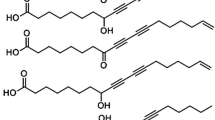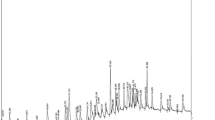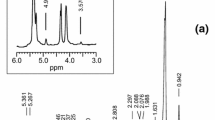Abstract
The oil of Amaranthus cruentus has been characterized by major and minor compounds. The series of fatty acids, triglycerides, sterols, methylsterols, terpenic and aliphatic alcohols, tocopherols, and hydrocarbons have been identified, by standards and mass spectrometry, and quantified by HRGC and HPLC. The content of these chemical compounds, together with the equivalent carbon numbers (ECN) and triglyceride carbon numbers (TCN), have been compared with the results of other edible vegetable and cereal oils. Composition of hydrocarbons is remarkable; mostly the high content of squalene (4.16 g/kg of seed) as well as concentration of n-alkenes (C23:1–C33:1) that reaches 332 ppm, while the concentration of n-alkanes (C23–C33) is only 155 ppm. The high concentration of β-tocopherol (546 ppm) and the profile of fatty acids show that amaranth oil is not protected against rapid oxidation while most of the sterols are esterified. Pharmaceutical and industrial applications of the most unique chemical compounds are also given.
Similar content being viewed by others
Author information
Authors and Affiliations
Additional information
Electronic Publication
Rights and permissions
About this article
Cite this article
León-Camacho, M., García-González, D.L. & Aparicio, R. A detailed and comprehensive study of amaranth (Amaranthus cruentus L.) oil fatty profile. Eur Food Res Technol 213, 349–355 (2001). https://doi.org/10.1007/s002170100340
Received:
Accepted:
Published:
Issue Date:
DOI: https://doi.org/10.1007/s002170100340




